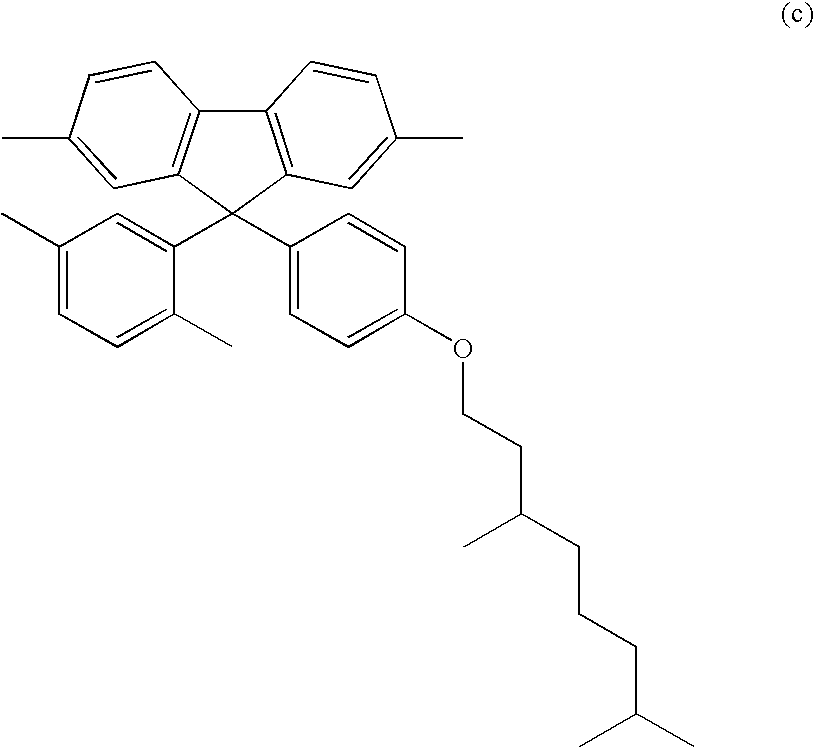9-Aryl and bisayl substituted polyfluorenes
a polyfluorene and bisayl technology, applied in the field of semiconductive polymers, can solve the problems of less electrochemical stability of materials containing these lower electron affinities, short lifetime of materials, and increased sensitivity to degradation, so as to improve the electron affinity of known polyfluorenes, improve pled performance, and improve the effect of electron injection
- Summary
- Abstract
- Description
- Claims
- Application Information
AI Technical Summary
Benefits of technology
Problems solved by technology
Method used
Image
Examples
examples
Monomer Examples
[0060] Monomers according to the invention may be prepared in accordance with the following scheme:
modelled examples
[0061] The effect of appending various groups to the phenyl rings of 9,9-diphenylfluorene repeat unit HOMO and LUMO levels was calculated using AM1 from the AMPAC software package (1) and ZINDO calculations from the Gaussian software package (2). [0062] 1) AM1 in Ampac program package [0063]Ampac 5.0 User's Manual, © 1994 Semichem, 7128 Summit, Shawnee, Kans. 66216 [0064] 2) ZINDO from Gaussian software: [0065] Gaussian 98, Revision A.9, [0066] M. J. Frisch, G. W. Trucks, H. B. Schlegel, G. E. Scuseria, [0067] M. A. Robb, J. R. Cheeseman, V. G. Zakrzewski, J. A. Montgomery, Jr., [0068] R. E. Stratmann, J. C. Burant, S. Dapprich, J. M. Millam, [0069] A D. Daniels, K. N. Kudin, M. C. Strain, O. Farkas, J. Tomasi, [0070] V. Barone, M. Cossi, R. Cammi, B. Mennucci, C. Pomelli, C. Adamo, [0071] S. Clifford, J. Ochterski, G. A. Petersson, P. Y. Ayala, Q. Cui, [0072] K. Morokuma, D. K. Malick, A. D. Rabuck, K. Raghavachari, [0073] J. B. Foresman, J. Cioslowski, J. V. Ortiz, A. G. Baboul, [...
PUM
| Property | Measurement | Unit |
|---|---|---|
| Dynamic viscosity | aaaaa | aaaaa |
| Transport properties | aaaaa | aaaaa |
| Charge carrier | aaaaa | aaaaa |
Abstract
Description
Claims
Application Information
 Login to View More
Login to View More - R&D
- Intellectual Property
- Life Sciences
- Materials
- Tech Scout
- Unparalleled Data Quality
- Higher Quality Content
- 60% Fewer Hallucinations
Browse by: Latest US Patents, China's latest patents, Technical Efficacy Thesaurus, Application Domain, Technology Topic, Popular Technical Reports.
© 2025 PatSnap. All rights reserved.Legal|Privacy policy|Modern Slavery Act Transparency Statement|Sitemap|About US| Contact US: help@patsnap.com



